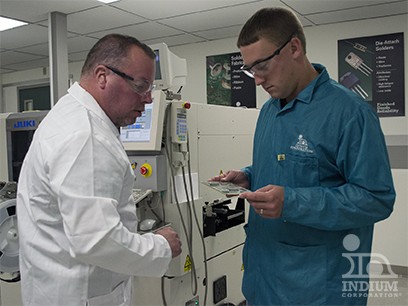
My last post highlighted the interconnect levels of an IGBT. This post focuses specifically on the die-attach level. Given the aforementioned demand increase on IGBTs, reliability performance starts here. Dies are delicate to begin with and then they are subjected to the rigors of high power cycling. This makes the choice of attachment all the more important. There are a few key factors that contribute to die failure as it pertains to the attach method.
-
Voiding
Voiding can be a hazardous symptom of poor wetting and contamination. Without a metallurgical relationship between the solder and the joining surfaces there is no wetting force to push out volatiles caused by contamination. This phenomenon can also occur where poor alloy choice and process temperature are concerned. All of this can literally make or break die performance.
-
Bond line thickness
A thinner bond line intuitively indicates a better thermal path. While this is true, it does not always translate to long-term reliability. What an ultra-thin bond line can also produce is a weak joint with no bulk solder to buffer the thermodynamic forces on the intermetallic layers.
-
Bond line planarity
While this is true at all levels, it is of utmost importance at the die level. If the bond line thickness has a thinner side, it will create an uneven stress concentration resulting in delamination and/or cracking. The correct solder volume and geometry are key along with wetting performance. All of these factors can contribute to uneven solder distribution along the bond line. Solder preform flatness can also play a part.
Feel free to contact me directly @ shomer@indium.com
Or visit our tech library to learn more about solving issues like these and many others…


